One of the oldest composite materials ever is on the comeback with a modern take – terrazzo. It is one of the newest trends in the design industry. Most of us are quite familiar with this interiors material that reigned in the 50’s and 60’s in so many floors as an affordable, durable flooring solution. I have childhood recollections of striking dark green or peach terrazzo floors. Some of you may also recollect similar floors in office and/or commercial buildings. I admit that terrazzo was not one of my favorite materials. So I got curious about why is it trendy again?
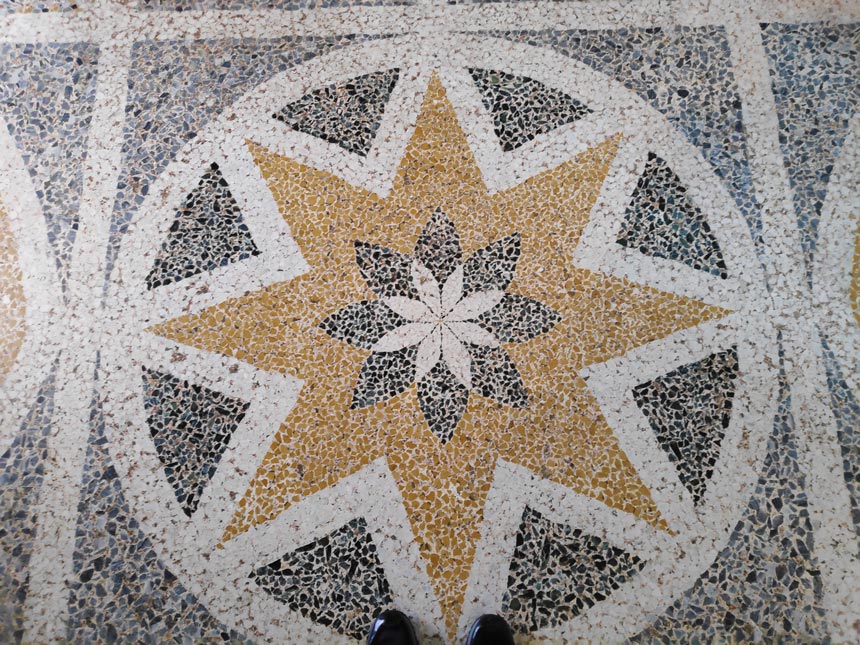
Terrazzo is a very old material (early neolithic times) and according to wikipedia it predates fired pottery by a thousand years! Terrazzo is made of exposed aggregates, such as marble, glass, or stone in varying sizes, bonded together in concrete or resin. After the application and grinding process, the result is a polished finish with a very textured like appearance depending on the size of the aggregates.

The most commonly used aggregate is marble. Hence, the combination of terrazzo with marble in a space makes an unbeatable duo. They compliment each other, while marble upgrades the whole composition.
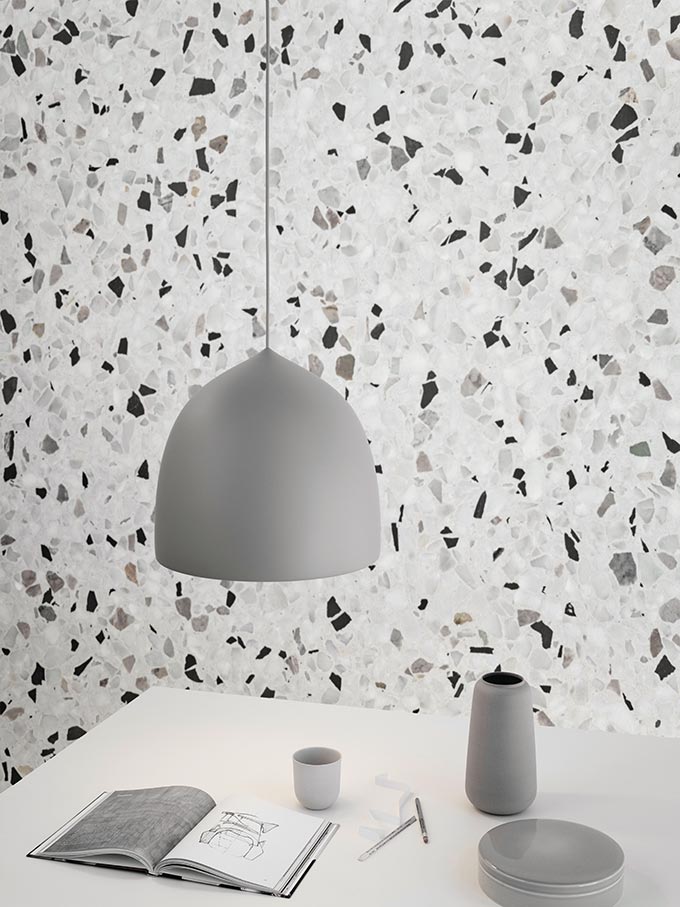
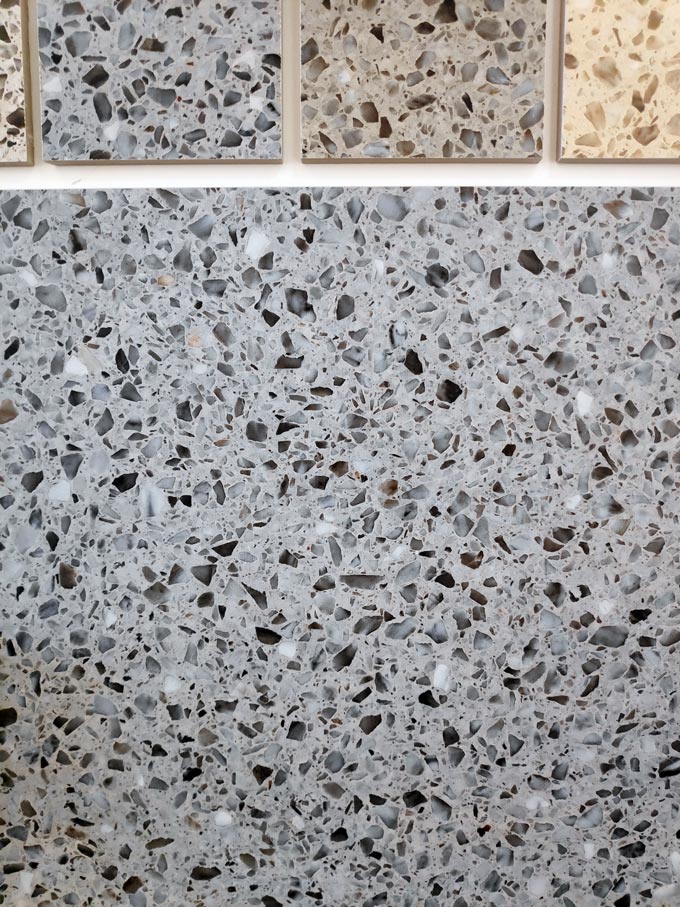
Background
A few decades back, the cement terrazzo was by far most common. Now, most indoor applications are with epoxy terrazzo. One of the main reasons is its extreme versatility in producing countless color combinations as opposed to its concrete mate. Moreover, by inserting metal strips during the application as borders, you can also make any shape or design you want in any other color of your choosing.
However, epoxy terrazzo has one main drawback. It is not meant for outdoor use. So don’t. Epoxy resin doesn’t behave well under direct sunlight. It loses its strength, its color becomes distorted and eventually it flakes off. Aside from that, its durability is one of the kind. It won’t be easy to “undo” it should you decide that you want another material instead. That is why during renovations I’d rather coat it with microcement rather than “demolish” it!
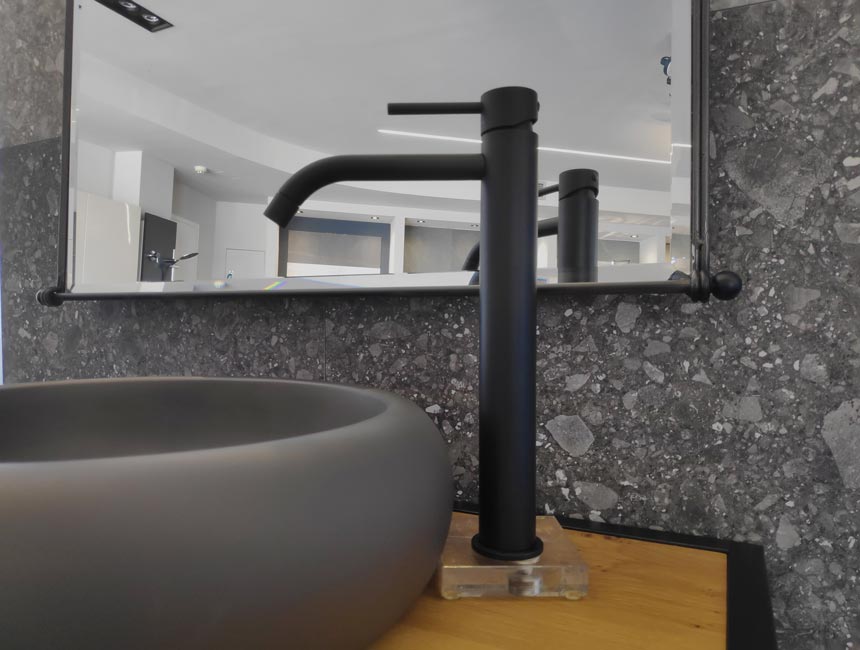
Present
Terrazzo’s endurance is partly why it is an ideal flooring especially for areas of high traffic. It is also partly the reason why it is so popular in commercial spaces. Furthermore, it is almost completely impermeable to water mainly because it doesn’t crack easily.
If you do happen to see cracks in an old terrazzo floor that is because the concrete slab underneath has actually cracked and needs retrofitting. (Trust me on this, I have retrofitted a great deal of structures due to all that seismic activity we have in Greece, so I’m positive about this).
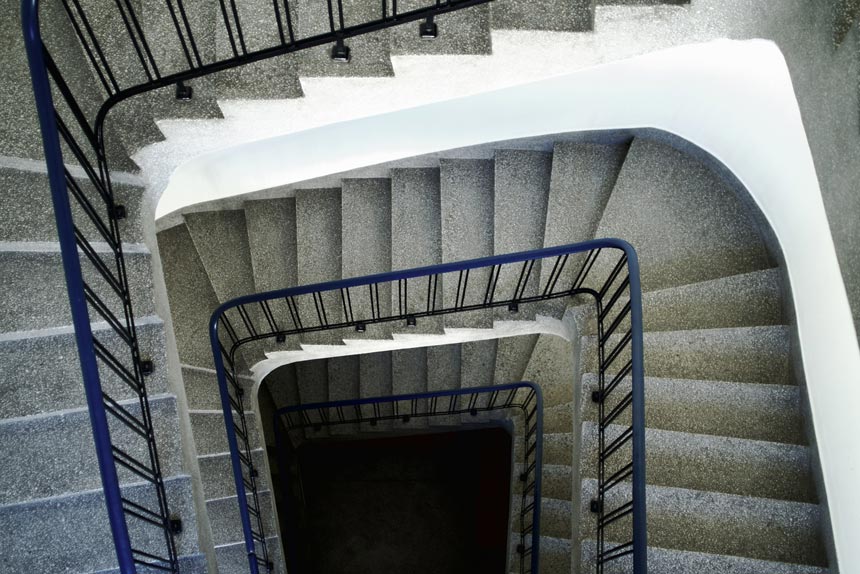
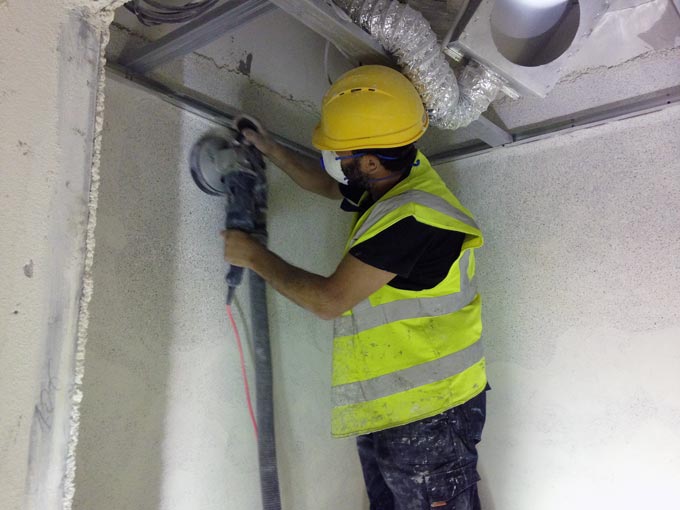
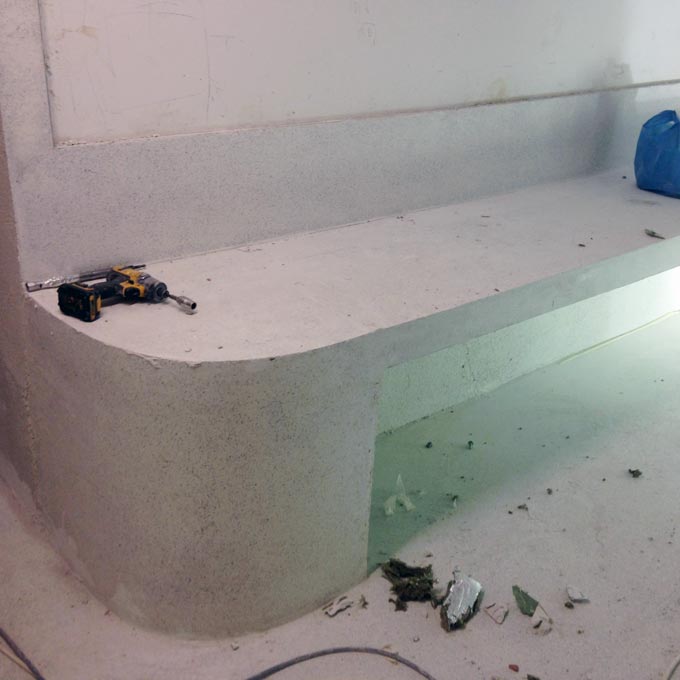
Note: Poured terrazzo like above is far more expensive than tiled terrazzo (partly due to the labor costs).
Anyway, terrazzo’s impermeability plus its low maintenance attributes make it such a great option for kitchens and bathrooms. Another bonus is that it is also practically stain-proof, while cleaning terrazzo surfaces is a piece of cake.
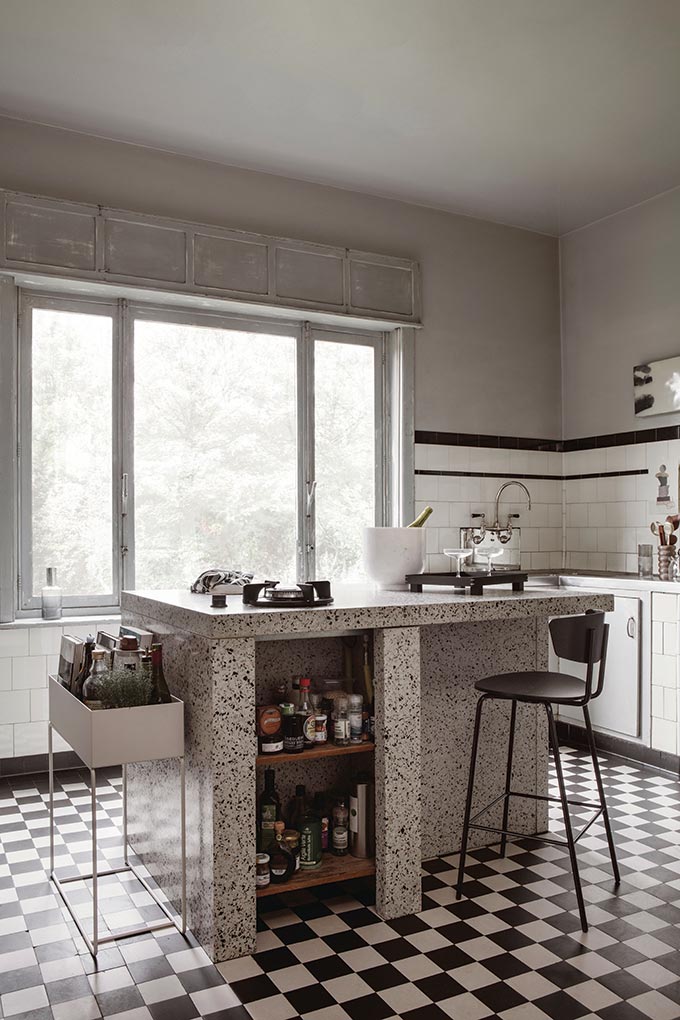
Should you give it a go?
Well, it’s definitely an interesting material and has been around for ages. Therefore, you can easily argue that it is a timeless classic. Also, another parameter to consider is its price tag that has risen somewhat since the 70’s.
Terrazzo’s cost varies, depending mainly if it’s poured or tiled. A terrazzo tile may cost about 40Euros/sq.m. but if it’s poured that price tag can easily go up to 90Euros/sq.m. Also, I strongly recommend that you don’t skip applying a primer before the actual installation for it improves significantly the bond between the concrete slab and the two-component epoxy resin. (So that’s a small additional cost to consider as well). But a proper installation is the only way to ensure you won’t have to deal with problems in the future.
Terrazzo Home Decor and Design Element
The great thing about the comeback of this interior material is that its use is not limited to just flooring. Instead, designers are using it as wall treatments, counters, washbasins, light fixtures, bookends, tables, and cutting boards. That way, you may introduce an element of surprise in your space without actually having to redo everything or making any hefty commitment. That’s the part that appeals to me, that I find exciting – the new possibilities because of new ways you can use it thanks to the epoxy.
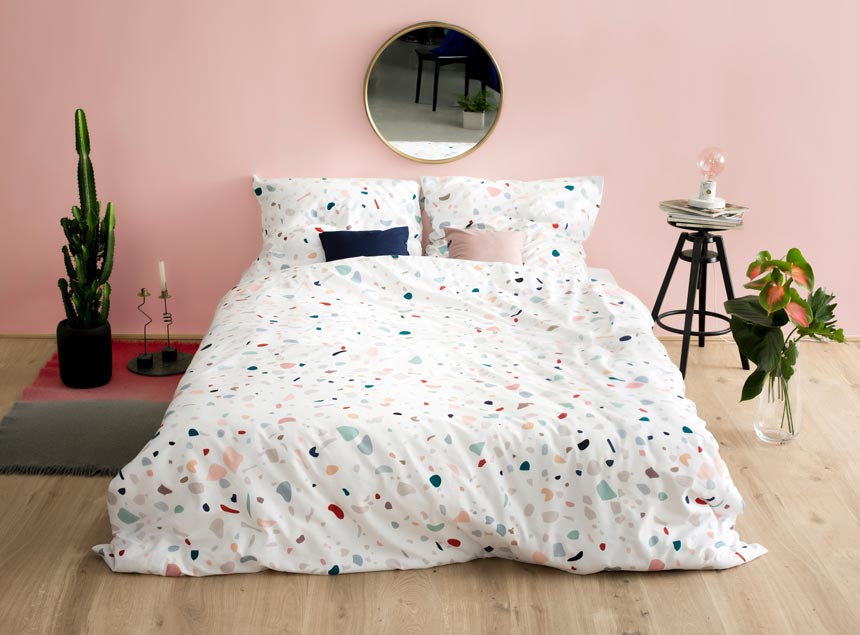

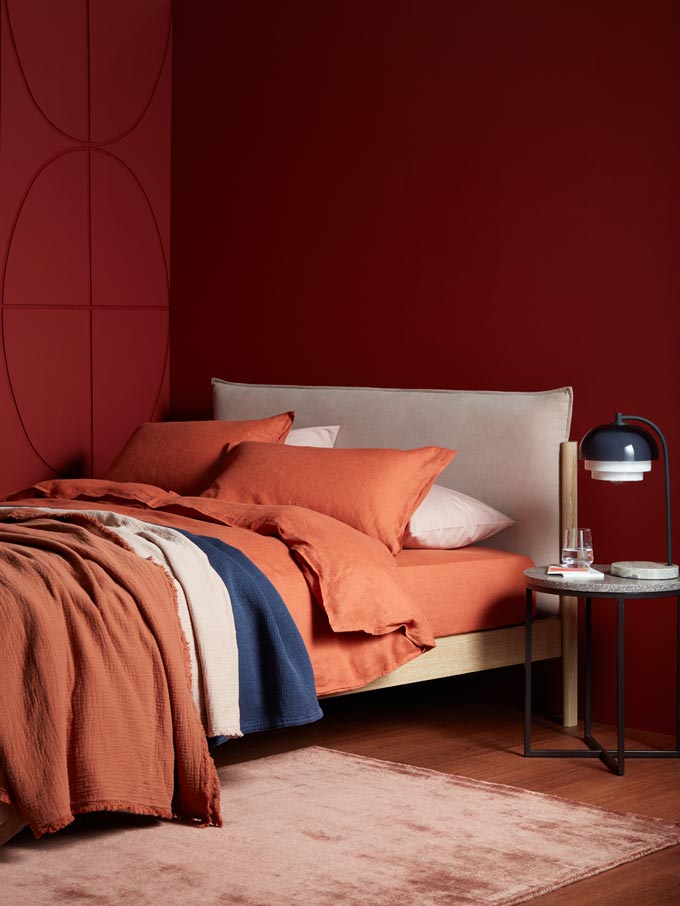
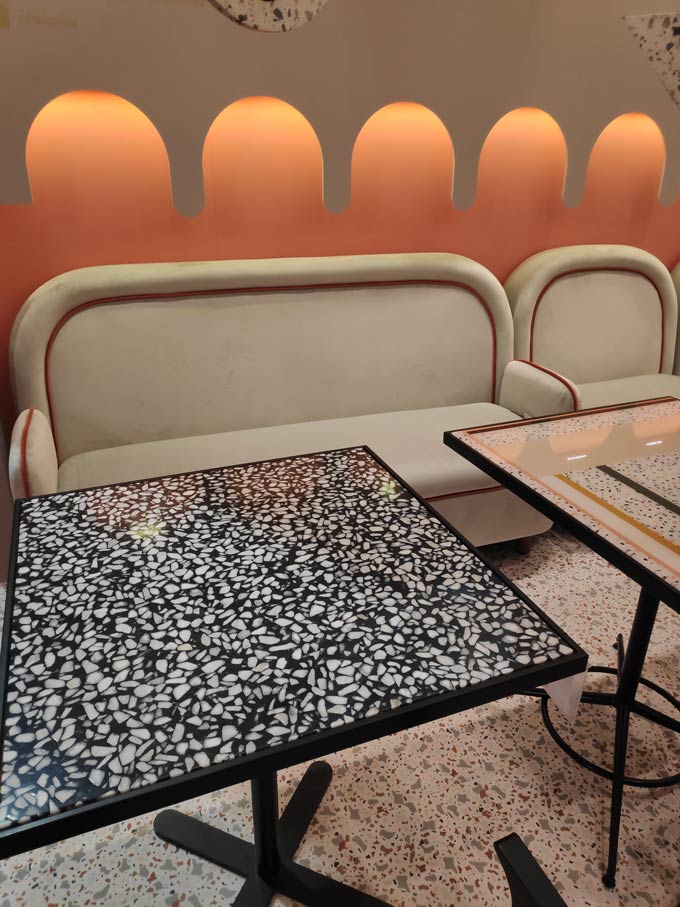
Personally, I prefer the idea of including it in a living space as a decor object or a backsplash in a kitchen. I have also used terrazzo tiling, in bathrooms for client projects. I combined it though with white sanitary ware and countertops in order to create contrasts, while keeping it from becoming overwhelming.
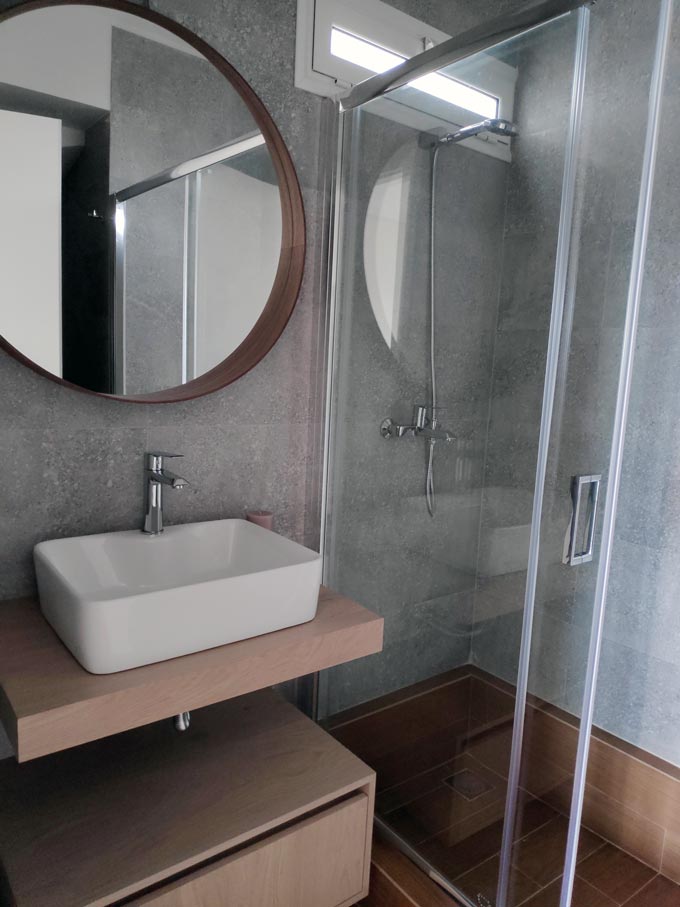
Moreover, I prefer a terrazzo with small size aggregates as opposed to large ones, because it tends to look more refined. If on the other hand, you like large size aggregates, then keep in mind that that will result by default in a more “rustic” effect. Thus, I recommend for a more sophisticated look to keep the mix as uniform in color as possible (that goes for the aggregates size too).
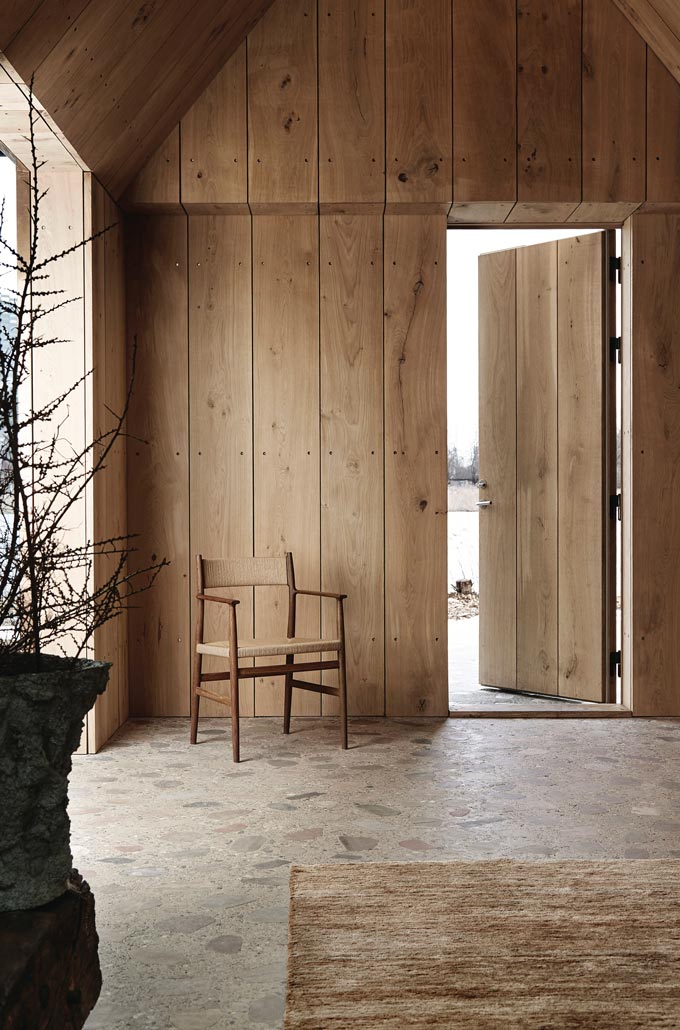
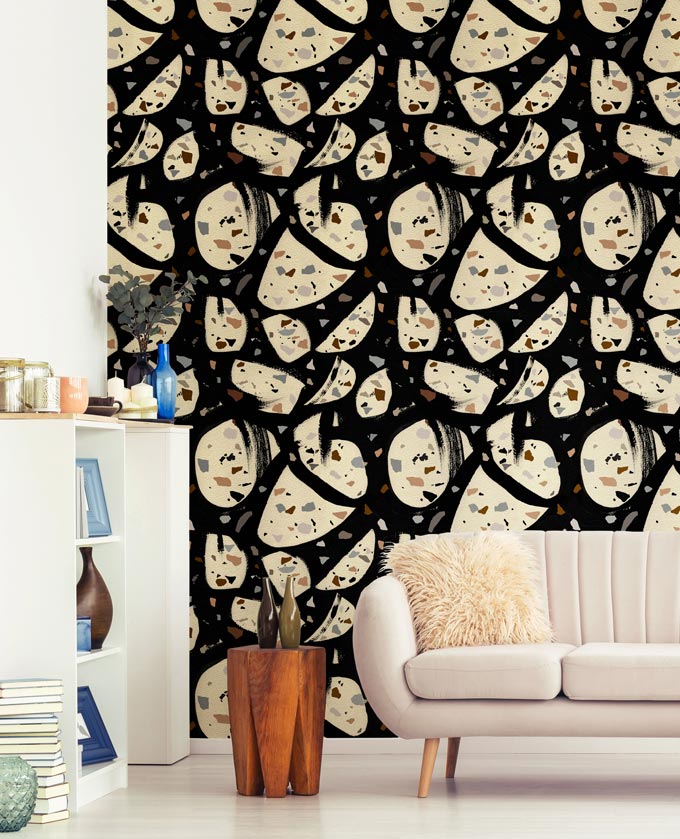
Takeaway thoughts on terrazzo
In any case, I have to admit that it adds an edge to a minimal styled space. Terrazzo has a much more refined appeal to it than ever before. Moreover, with some proper planning, it can become an awesome design “ingredient.”
Hence, it can and will restore its former glory and well-earned reputation over the centuries. As a matter of fact, Casa Salvatori in Milan brings together marble furnishings and flecked terrazzo floors, upholding my very belief.
Rest assured that terrazzo is spotted at every single design fair since its renaissance. The last design fair I can account for so far was Cersaie 2019. Tiles were used instead to replicate that chaotic wallpaper effect terrazzo has in a space making quite an impact.
Truly yours,

Last update: 12/02/19



